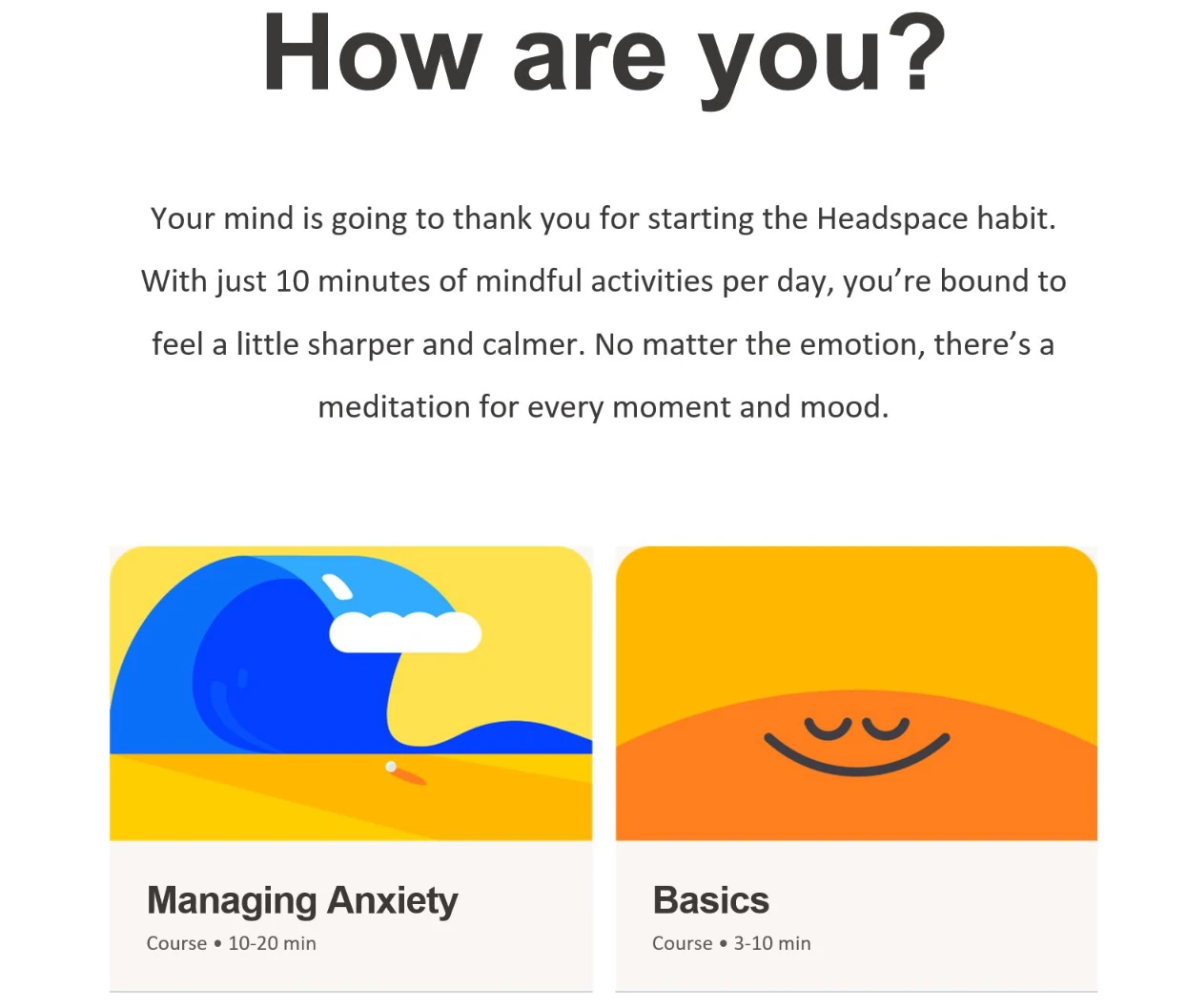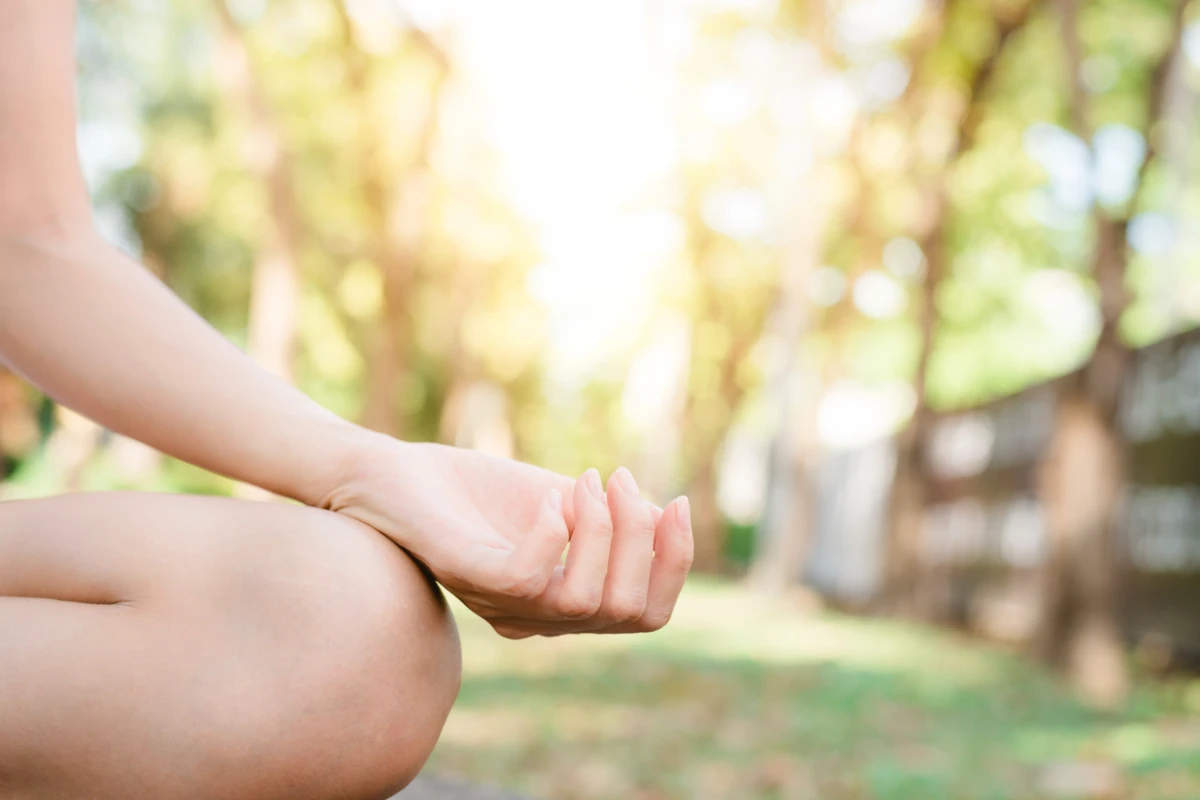Meditate before sleeping with Headspace
Before going to sleep, it's common for our minds to be filled with thoughts and worries from the day, so we can meditate with Headspace.

Before going to sleep, it's common for our minds to be filled with thoughts and worries from the day. Instead of letting this prevent us from resting properly, a good option is to incorporate meditation into our nightly routine. Headspace, a popular meditation app, offers a series of tools and techniques that can help us meditate before going to sleep with Headspace and improve our overall wellbeing.
How to Meditate
Before delving into the different meditation practices that we can carry out before sleeping with Headspace, it's important to know how to meditate in general. Meditation is a mental training process that allows us to calm our mind and cultivate mindfulness. By focusing on breathing, thoughts, and bodily sensations, we can learn to be aware of the present moment and release accumulated stress.
To start meditating, find a quiet place where you can be comfortable and without distractions. You can sit in a relaxed posture, like the Lotus position or simply in a chair with your feet on the ground. Gently close your eyes and bring your attention to your breathing flow. Don't worry if your mind gets distracted, just acknowledge the thoughts and gently redirect your attention back to your breath. With practice, meditation becomes more fluid and rewarding.
Meditation is a practice that has been used for centuries in different cultures around the world. In ancient India, for example, yogis practiced meditation as a way to achieve spiritual enlightenment. In Buddhism, meditation is a fundamental part of the path towards liberation from suffering. In Chinese culture, meditation has been used to promote health and overall wellbeing.
Meditation has also been the subject of numerous scientific studies that support its benefits for mental and physical health. It has been shown that meditation reduces stress, improves concentration and memory, and promotes a greater sense of wellbeing. In addition, meditation can help reduce blood pressure, strengthen the immune system, and improve sleep quality.
There are different meditation techniques that can be practiced, such as mindfulness meditation, loving-kindness meditation, and transcendental meditation. Each of these techniques has its own unique characteristics and benefits. Mindfulness meditation, for example, focuses on the conscious observation of thoughts and sensations without judging them. Loving-kindness meditation, on the other hand, focuses on cultivating feelings of love and compassion towards oneself and others.
In sum, meditation is a powerful practice that can help us calm our minds, reduce stress, and improve our quality of life. Whether we're looking for a way to relax before sleeping or simply want to cultivate more mindfulness in our daily lives, meditation can be an invaluable tool. So find a quiet moment, sit comfortably, and begin. to explore the benefits of meditation in your own life.
Headspace reminders for daily meditation
Daily meditation can have a significant impact on our mental and emotional wellbeing. Headspace offers reminders and notifications that encourage us to establish a daily meditation routine. These reminders remind us of the importance of taking care of our mental health and give us a boost to not postpone the practice. With just a few minutes of meditation a day, we can transform our relationship with stress and anxiety, and improve our sleep quality and overall wellbeing.

Meditation is an ancient practice used by different cultures around the world to achieve inner peace and mental clarity. Through meditation, we can learn to observe our thoughts and emotions without judging them, thus allowing us to cultivate a greater understanding of ourselves and our environment.
Headspace, a guided meditation app, helps us incorporate meditation into our daily lives in a simple and accessible way. With its wide variety of programs and sessions, we can choose the duration and focus that best suits our needs and preferences.
Apart from daily reminders, Headspace also offers a wide range of meditation topics, such as stress management, improving concentration, and promoting self-esteem. These topics allow us to address specific areas of our life that could benefit from the practice of meditation.
Regular practice of meditation can have numerous benefits for our health and wellbeing. Scientific studies have shown that meditation can reduce stress levels, improve attention and concentration, strengthen the immune system, and promote a sense of calm and emotional balance.
On the other hand, meditation can also help us develop greater compassion and empathy towards ourselves and others. By cultivating a quieter and clearer mind, we can be more aware of our own needs and the needs of others, thus fostering healthier and more meaningful relationships.
Thanks to Headspace reminders, we can incorporate meditation into our daily lives, reminding us of the importance of taking care of our mental and emotional health. Through regular practice of meditation, we can experience a range of benefits for our physical and emotional wellbeing, improving our overall quality of life.
How to meditate before sleep
Meditating before sleep can be an effective way to relax the mind and prepare the body for rest. Headspace offers various meditation practices specially designed the spine. These practices can range from guided meditations to release accumulated tensions to breathing exercises that help us relax the body and mind.
A common practice for meditation before sleeping is to visualize a calm and relaxing place. Close your eyes and visualize a serene environment, such as a beach or a quiet forest. Imagine every detail of that place: the sounds, the smells, the sensations. This visualization helps us disconnect from worries and immerse ourselves in a state of calm and serenity.
Apart from visualization, another technique you can use for meditation before sleeping is mindfulness meditation. This practice involves focusing your attention on the present moment, without judging or analyzing the thoughts that arise. You can start by paying attention to your breathing, feeling how the air enters and leaves your body. As you concentrate on your breathing, you may notice how your mind calms down and you feel more relaxed.
Meditation before sleep can also include the practice of gratitude. Before going to bed, take a moment to reflect on the things you are grateful for in your life. You can make a mental list or write in a gratitude journal. Focusing on the positive will help you cultivate an attitude of appreciation and let go of worries or negative thoughts that may interfere with your sleep.
Another technique you can try is body scan meditation. This practice involves directing your attention to each part of your body, starting from the feet and slowly moving up to the head. As you focus on each part, you may notice any tension or discomfort and allow it to dissolve as you breathe deeply. This technique helps you relax muscles and release any stress accumulated in your body.
Remember that meditation before sleep is a personal practice, so it's important to find techniques that best suit you. You can experiment with different approaches and adjust them according to your needs and preferences. The most important thing is to dedicate some time for yourself and allow yourself to relax before resting.
Meditation to align the 7 chakras before sleep
In addition to general meditation practices, Headspace also offers specific meditations to align and balance the 7 chakras before sleep. The chakras are energy centers along the body and their proper alignment is essential for our physical and emotional well-being.

These meditations focus on each of the 7 chakras, from the root chakra to the crown chakra. As we immerse ourselves in the practice, we can feel a sense of fluidity and balance in our energetic body. This prepares us for a restful sleep and helps us wake up with a sense of vitality and mental clarity.
The root chakra, also known as Muladhara, is located at the base of The spine. This chakra is related to our connection with the earth and gives us a sense of security and stability. During meditation, we can visualize a bright red energy flowing into our root chakra, strengthening and balancing it.
The sacral chakra, or Svadhisthana, is located in the lower abdomen area. This chakra is associated with our emotions, sexuality, and creativity. During meditation, we can imagine a warm orange energy flowing into our sacral chakra, releasing any emotional blockages and stimulating our creativity.
The Solar Plexus chakra, also known as Manipura, is located in the stomach area. This chakra is related to our self-esteem, personal power, and confidence. During meditation, we can visualize a bright yellow energy flowing into our Solar Plexus chakra, strengthening our confidence and empowering us.
The heart chakra, or Anahata, is located in the center of the chest. This chakra is associated with unconditional love, compassion, and emotional connection. During meditation, we can imagine a soft green energy flowing into our heart chakra, opening our heart and allowing love to flow freely.
The throat chakra, or Vishuddha, is situated at the base of the neck. This chakra is related to communication and personal expression. During meditation, we can visualize a bright blue energy flowing into our throat chakra, releasing any blockages in our ability to express ourselves authentically and communicate.
The third eye chakra, or Ajna, is located in the center of the forehead between the eyebrows. This chakra is associated with intuition, mental clarity and spiritual connection. During meditation we can imagine a deep indigo energy flowing into our third eye chakra opening up our mind to inner wisdom and intuitive perception.
The crown chakra or Sahasrara is located at the top of the head. This chakra is related to connection with the divine and spirituality. During meditation, we can visualize a radiant violet energy flowing into our crown chakra, connecting us with universal wisdom and spiritual essence.
Meditate while saving with Headspace Family using Sharingful
Headspace also offers the option to meditate while saving with Headspace Family using Sharingful. Sharingful is a special feature that allows us to share our Headspace subscription with other people. This allows us to promote meditation in our loved ones and save in the process.
By using Sharingful, we can create a family group on Headspace and share the benefits of meditation among us. Group meditation can be a rewarding experience as it allows us to connect with others and share our personal growth. In addition, by saving with the shared use option, Headspace becomes an even more accessible and valuable investment.























































































































































